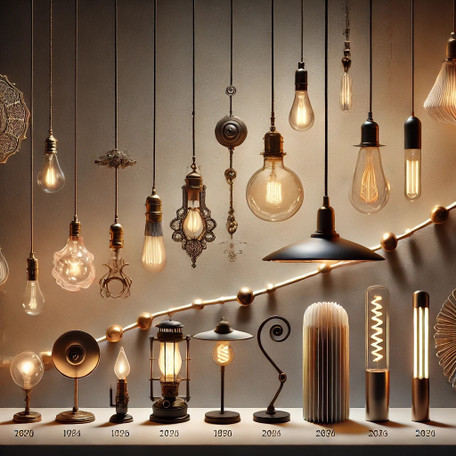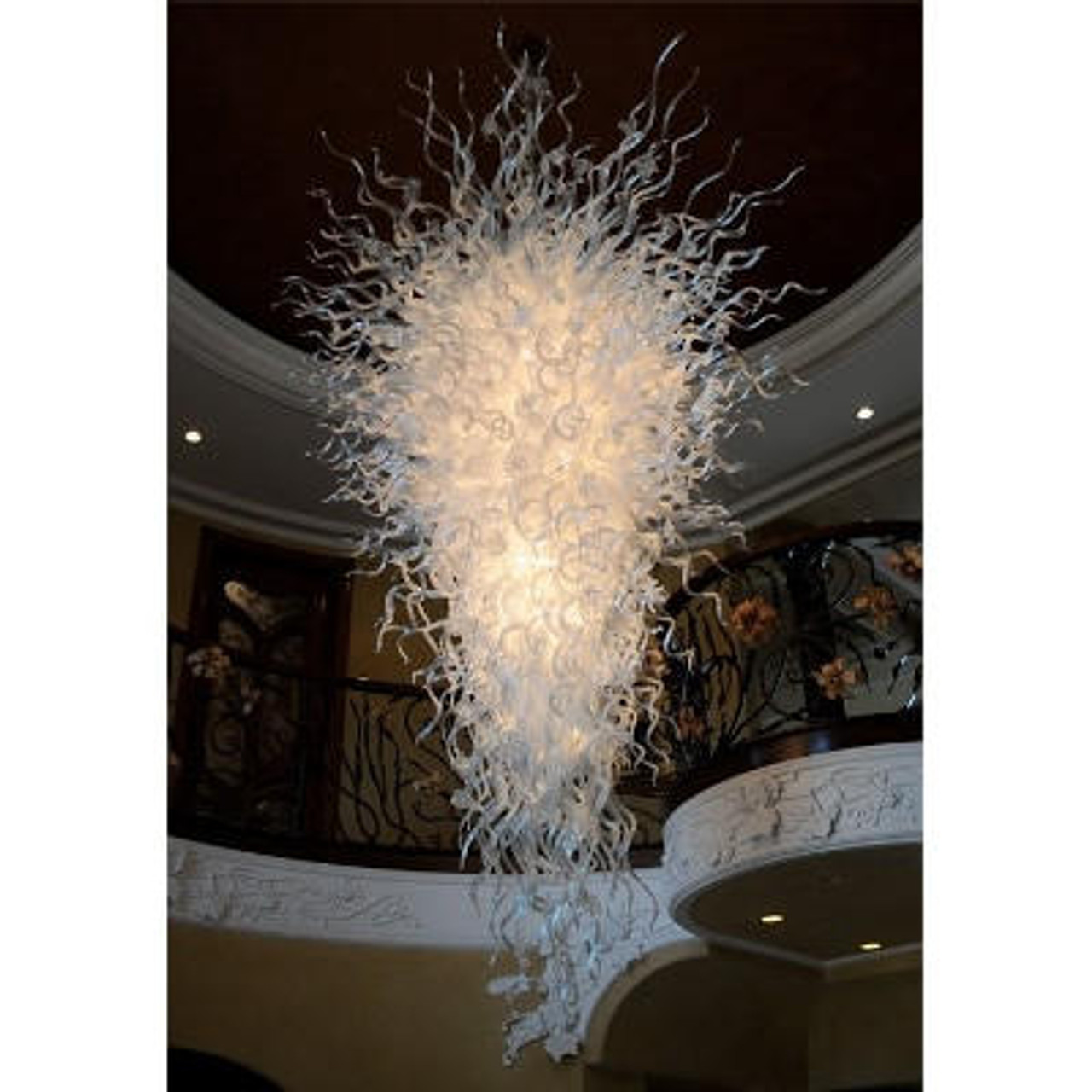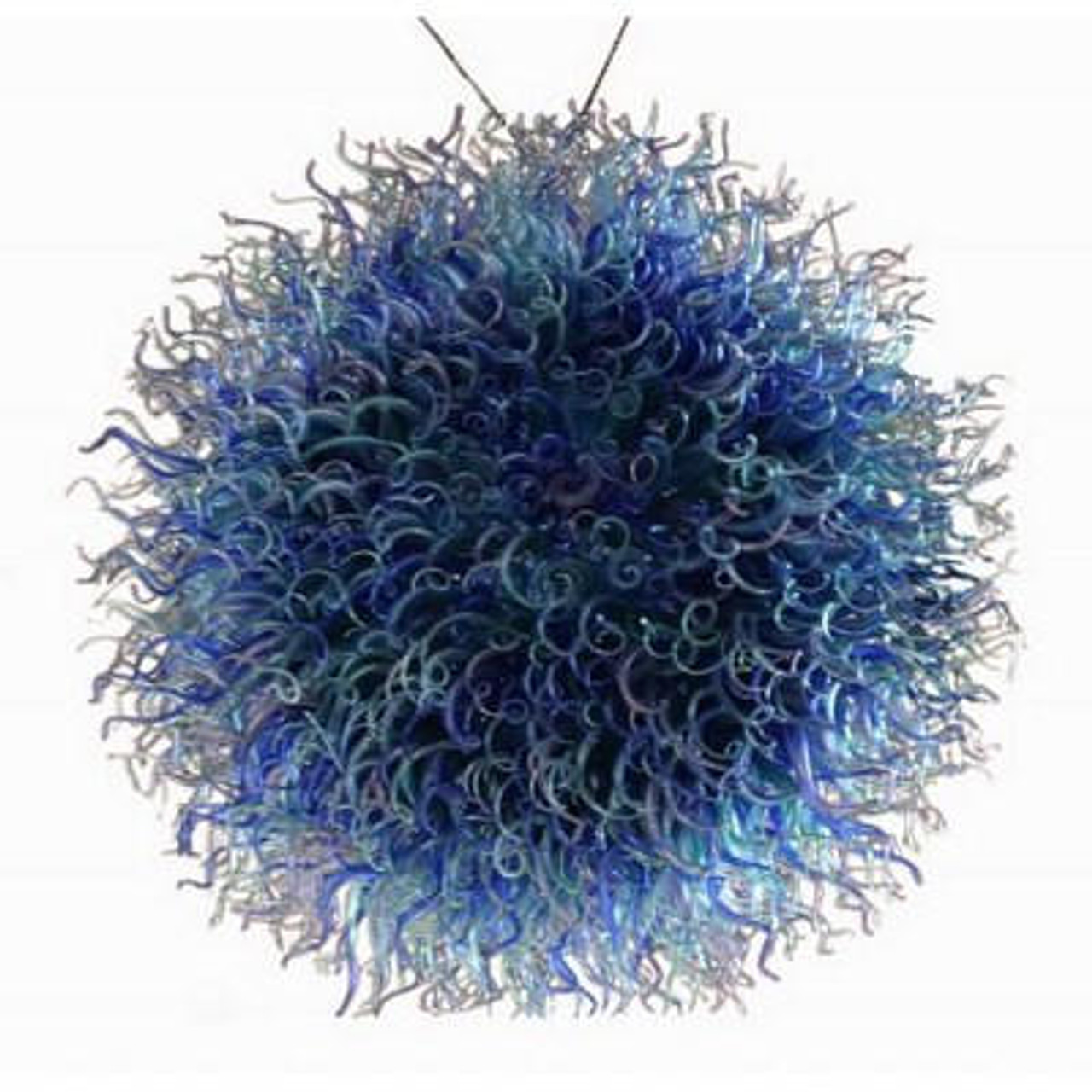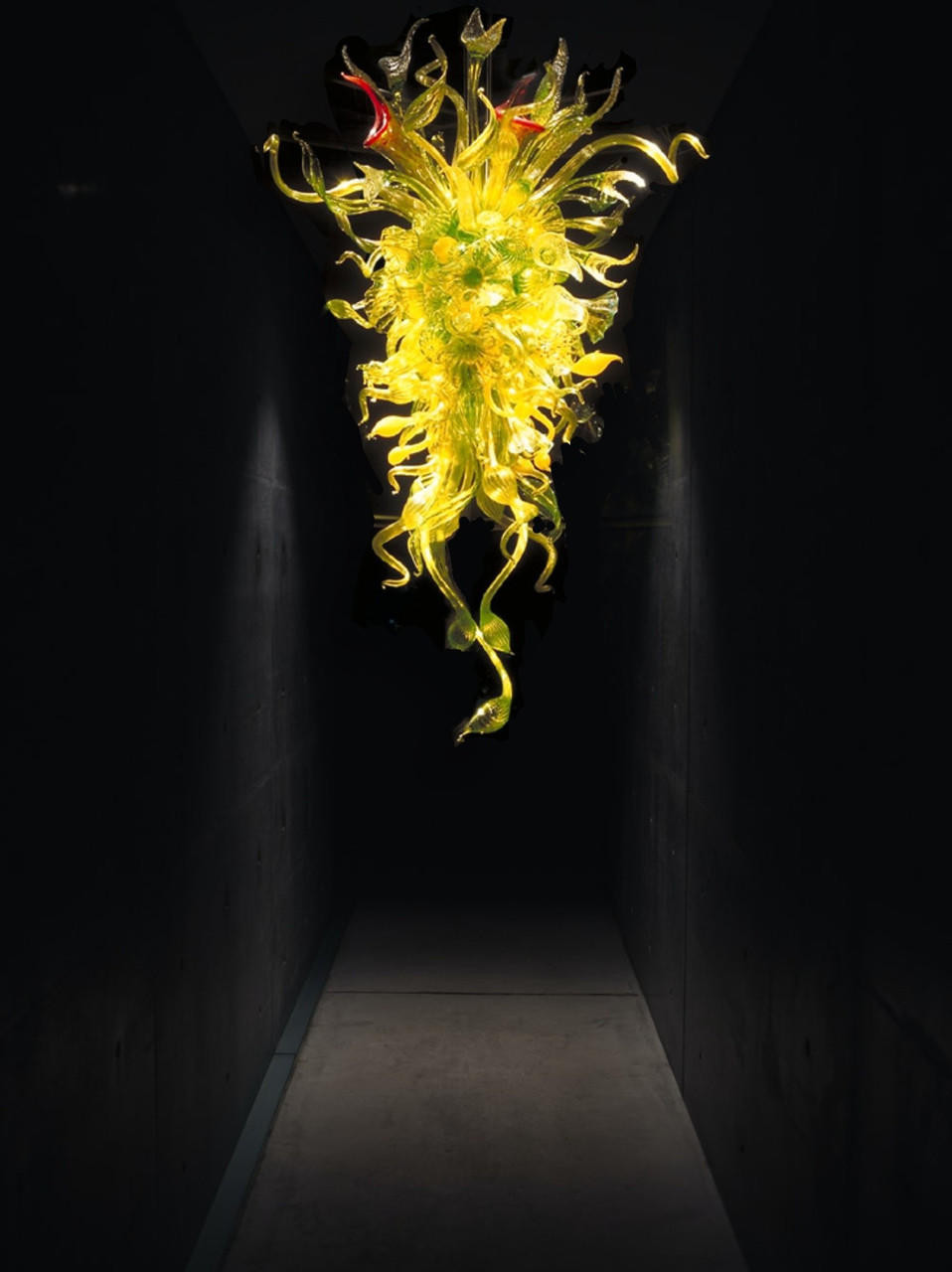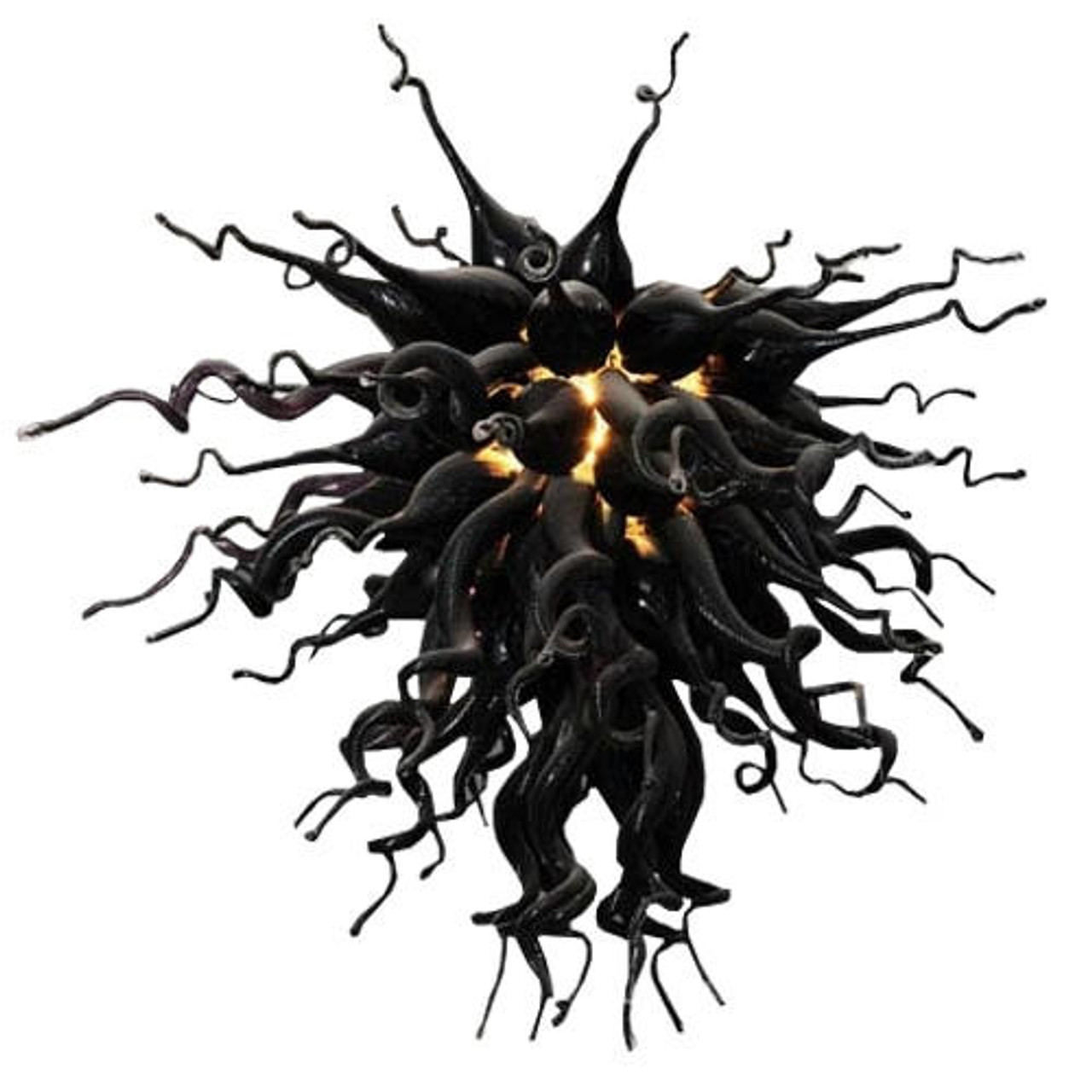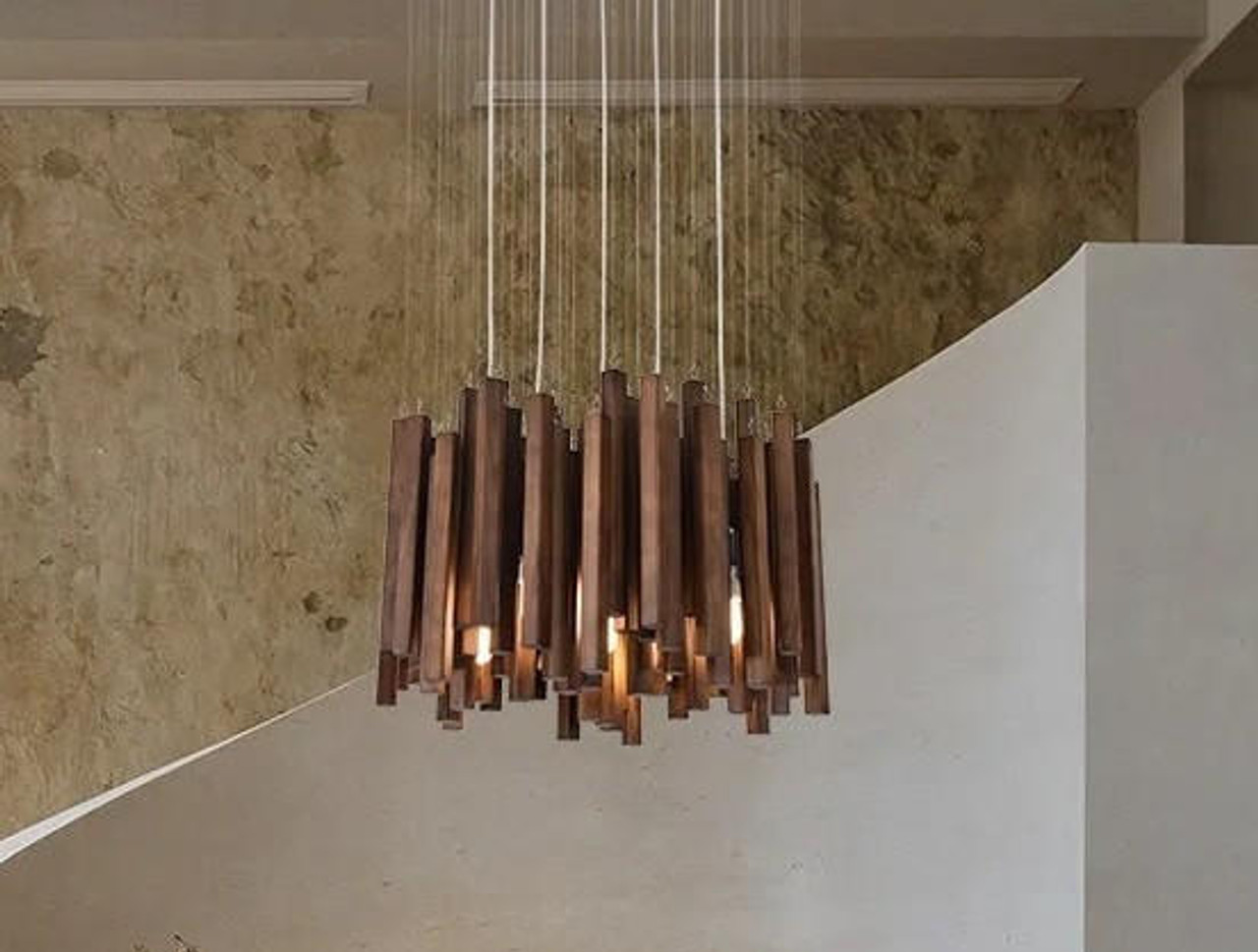The Art of Lighting: A Historical Journey Through Iconic Lighting Designs
Aug 21, 2024
The Art of Lighting: A Historical Journey Through Iconic Lighting Designs
Lighting is much more than a means to illuminate a space; it is an art form that has evolved alongside human civilization, reflecting our technological advancements, cultural shifts, and aesthetic sensibilities. From the early days of oil lamps and candles to the modern era of smart lighting and sustainable design, the journey of lighting design is a fascinating exploration of innovation, creativity, and functional artistry. This blog takes you on a historical journey through iconic lighting designs, highlighting key designers, groundbreaking innovations, and how these developments have shaped our understanding of lighting as an art form.
Introduction to the History of Lighting Design
Overview of the Evolution of Lighting from a Functional Necessity to an Art Form
Lighting has always played a crucial role in human life. In the earliest days, it was a purely functional necessity—torches, oil lamps, and candles provided the means to see after dark and navigate the night. However, as societies evolved, so too did the concept of lighting. No longer merely functional, lighting began to take on an aesthetic dimension, becoming an integral part of architectural and interior design.
The evolution of lighting from basic necessity to an art form was driven by technological advancements, cultural influences, and the human desire to create beauty and ambiance. The introduction of electricity in the late 19th century was a pivotal moment, transforming lighting design and allowing for a level of creativity and expression that had never been possible before.
The Impact of Technological Advancements on Lighting Design
Technological advancements have continually reshaped the landscape of lighting design. The invention of the electric light bulb by Thomas Edison in 1879 marked the beginning of modern lighting design, providing a reliable and controllable light source that revolutionized both public and private spaces. This innovation opened the door for designers to experiment with form, function, and aesthetics in ways that were previously unimaginable.
As technology continued to evolve, so did the possibilities for lighting design. The development of new materials, the advent of LED technology, and the integration of smart systems have all contributed to the rich and diverse world of lighting design that we see today. Each new technology has not only improved the functionality of lighting but has also expanded the creative potential for designers to use light as a medium for artistic expression.
Early Innovations in Lighting
The Transition from Oil Lamps and Candles to Gas Lighting
Before the widespread use of electricity, lighting was primarily provided by oil lamps, candles, and, later, gas lighting. Oil lamps, dating back to ancient civilizations, were one of the earliest forms of controlled lighting. These lamps, fueled by olive oil or animal fat, were used in homes, temples, and public spaces, providing a steady, albeit dim, source of light.
Candles followed, offering a more portable and manageable source of light. The invention of the candle was a significant step forward in lighting technology, allowing for more versatile and decorative lighting solutions. However, it was the introduction of gas lighting in the 19th century that marked a true revolution in urban lighting. Gas lamps illuminated streets, public buildings, and homes with a brighter and more consistent light than ever before, setting the stage for the electrification of lighting.
The Invention of the Electric Light Bulb and Its Transformative Impact on Design
The invention of the electric light bulb by Thomas Edison in 1879 was a transformative moment in the history of lighting. This breakthrough not only provided a safer and more efficient alternative to gas lighting but also fundamentally changed the way people thought about lighting in their homes and public spaces.
Electric lighting allowed for the creation of more complex and varied lighting fixtures, enabling designers to explore new forms and functions. Chandeliers, sconces, and table lamps began to take on more elaborate designs, incorporating materials like glass, metal, and fabric in ways that were previously impossible. The electric light bulb also made it possible to create adjustable lighting, allowing for greater control over the intensity and direction of light, further enhancing its role in interior design.
Art Deco and Mid-Century Modern Lighting
The Rise of Lighting as a Decorative Element During the Art Deco Period
The Art Deco period of the 1920s and 1930s was a time of bold, geometric designs, rich materials, and a focus on luxury and glamour. Lighting played a central role in Art Deco design, with lamps and fixtures becoming key decorative elements in both residential and commercial spaces.
Art Deco lighting was characterized by its use of materials like chrome, glass, and Bakelite, and by its distinctive geometric shapes and patterns. Fixtures often featured intricate details, such as stepped forms, zigzag patterns, and sunburst motifs, reflecting the broader aesthetic trends of the time. Designers like Émile-Jacques Ruhlmann and Jean Perzel were at the forefront of this movement, creating iconic pieces that are still celebrated today for their elegance and innovation.
Key Designers and Iconic Pieces from the Mid-Century Modern Era
The mid-century modern era, spanning from the 1940s to the 1960s, brought a new approach to lighting design, emphasizing simplicity, functionality, and the use of new materials. This period saw the emergence of some of the most iconic lighting designs in history, many of which continue to influence designers today.
One of the most famous designs from this era is the Bubble Lamp by George Nelson, introduced in 1952. Inspired by Swedish hanging lamps, Nelson's design featured a web-like structure covered in a translucent plastic material that diffused light softly and evenly. The Bubble Lamp became a symbol of mid-century modern design, celebrated for its innovative use of materials and its clean, organic form.
Another iconic piece from this era is the Arco Lamp by Achille Castiglioni, designed in 1962. The Arco Lamp was revolutionary in its design, featuring a long, curved arm that extended from a marble base, allowing the light to be positioned over a table or seating area without the need for a ceiling fixture. This blend of form and function epitomized the mid-century modern ethos and remains a highly sought-after design today.
Postmodernism and the Revival of Ornamentation
The Influence of Postmodernism on Lighting Design
The postmodern movement of the late 20th century marked a departure from the minimalism and functionalism of the mid-century modern era, embracing a more eclectic and playful approach to design. In lighting, this meant a return to ornamentation, color, and historical references, often with a sense of irony or humor.
Postmodern lighting designs were characterized by their bold use of color, unconventional shapes, and a mix of materials. Designers like Ettore Sottsass, founder of the Memphis Group, led the way with creations that defied traditional design norms. The Carlton Bookcase, with its asymmetrical, totem-like structure, became an emblem of the movement, and its influence extended to lighting design with pieces like the Tahiti Lamp, which featured a playful combination of geometric shapes and bright colors.
Examples of How Designers Reintroduced Ornamentation and Playfulness into Lighting
During the postmodern era, designers reintroduced ornamentation and playfulness into lighting, challenging the austere minimalism that had dominated the previous decades. Lighting fixtures became canvases for artistic expression, often blurring the line between functional objects and sculptural works of art.
One example of this trend is the Eclipse Lamp by Vico Magistretti, designed in 1965. The Eclipse Lamp featured a playful design with rotating discs that allowed the user to control the amount of light emitted, creating an interactive experience. The lamp's whimsical appearance and innovative functionality made it a standout piece in postmodern design.
Another example is the Ingo Maurer's Zettel'z 5 Chandelier, which combines light and paper to create a customizable, interactive lighting experience. The chandelier features dozens of sheets of Japanese paper, which can be personalized with drawings or messages, creating a unique and ever-changing piece of art. This blend of personal expression and functionality is a hallmark of postmodern lighting design.
Contemporary and Minimalist Lighting
The Move Towards Minimalism and the Emphasis on Form and Function
In the late 20th and early 21st centuries, a new wave of minimalist design emerged, focusing on simplicity, clean lines, and the intrinsic beauty of materials. This movement was a response to the excesses of postmodernism, with designers seeking to strip away ornamentation and create lighting fixtures that were both functional and aesthetically pleasing in their purity.
Minimalist lighting design emphasizes the essential elements of a fixture—its form, material, and light source—while eliminating unnecessary details. The result is a focus on the interplay between light and space, with fixtures that enhance the architecture of a room rather than dominating it.
Key Designers and Products That Define Contemporary Lighting
Several designers and brands have become synonymous with contemporary and minimalist lighting, creating pieces that are celebrated for their elegance and simplicity. Flos, an Italian lighting company, has been at the forefront of this movement, collaborating with designers like Philippe Starck, Achille Castiglioni, and Jasper Morrison to create iconic minimalist fixtures.
One of the most famous contemporary lighting designs is the IC Light by Michael Anastassiades for Flos. Introduced in 2014, the IC Light features a perfectly balanced glass orb resting on a thin metal frame, creating a sense of harmony and balance. The simplicity of the design belies its sophistication, making it a quintessential example of minimalist lighting.
Another key figure in contemporary lighting is Ingo Maurer, known for his innovative and often whimsical designs. Maurer's Lucellino Lamp, featuring a light bulb with delicate, feathered wings, is a perfect example of how contemporary design can blend minimalism with a touch of playfulness, creating a fixture that is both functional and full of character.
The Role of Lighting in Modern Architecture
How Lighting Design Integrates with Modern Architectural Practices
In modern architecture, lighting is not just an afterthought; it is an integral part of the design process. Architects and lighting designers work together to create environments where light enhances the spatial experience, highlights architectural features, and contributes to the overall atmosphere of a space.
Lighting design in modern architecture often focuses on the use of natural light, with large windows, skylights, and light wells being incorporated into the design to bring daylight into the interior. Artificial lighting is used to complement natural light, providing illumination after dark and accentuating key architectural elements.
One of the key principles in modern architectural lighting is the concept of layered lighting, which involves using a combination of ambient, task, and accent lighting to create a balanced and dynamic environment. This approach allows for greater flexibility and control over the lighting, enabling spaces to be adapted to different uses and moods.
The Use of Lighting to Enhance and Define Architectural Spaces
Lighting plays a crucial role in defining the character of architectural spaces. It can create a sense of drama, warmth, or tranquility, depending on the design and placement of the fixtures. In modern architecture, lighting is often used to emphasize the clean lines, open spaces, and minimalist forms that define the style.
For example, indirect lighting is commonly used to create a soft, ambient glow that enhances the architectural features of a space without drawing attention to the light source itself. This technique is often employed in modern interiors, where the goal is to create a serene and uncluttered environment.
In contrast, accent lighting is used to highlight specific features, such as a textured wall, a piece of art, or an architectural detail. By focusing light on these elements, designers can create focal points within a space, adding depth and interest to the overall design.
Sustainable and Smart Lighting Innovations
The Rise of Eco-Friendly Lighting Designs and Energy-Efficient Technologies
As concerns about environmental sustainability have grown, the lighting industry has responded with a range of eco-friendly designs and energy-efficient technologies. The development of LED lighting has been a game-changer, offering long-lasting, low-energy alternatives to traditional incandescent bulbs. LEDs not only consume less power but also offer greater flexibility in terms of color temperature and brightness, making them ideal for a wide range of applications.
Sustainable lighting design also involves the use of environmentally friendly materials and production processes. Designers are increasingly turning to recycled or renewable materials, such as bamboo, recycled glass, and reclaimed wood, to create fixtures that are both beautiful and sustainable.
The Integration of Smart Technology into Lighting Design and Its Impact on How We Interact with Our Environments
The advent of smart technology has revolutionized the way we interact with lighting in our homes and workplaces. Smart lighting systems allow users to control their lights remotely, adjust brightness and color temperature, and create customized lighting scenes—all from their smartphones or voice-activated assistants like Amazon Alexa or Google Home.
Smart lighting not only offers convenience but also contributes to energy efficiency. For example, systems can be programmed to turn off lights when rooms are unoccupied or to adjust brightness based on the time of day, reducing energy consumption and lowering utility bills.
In addition to functional benefits, smart lighting also enhances the aesthetic possibilities of lighting design. With the ability to change the color and intensity of light at the touch of a button, users can create dynamic and personalized environments that adapt to their moods and needs.
The Future of Lighting Design
Speculation on Upcoming Trends in Lighting Design
Looking to the future, several trends are likely to shape the next generation of lighting design. One of the most significant is the continued integration of technology, with smart systems becoming increasingly sophisticated and widespread. As artificial intelligence (AI) and the Internet of Things (IoT) continue to evolve, we can expect lighting systems that are even more intuitive, responsive, and personalized.
Another trend is the increasing focus on human-centric lighting, which aims to align artificial lighting with our natural circadian rhythms. This approach involves the use of lighting that adjusts throughout the day to mimic the changing quality of natural light, promoting well-being and improving sleep patterns.
The Potential Impact of New Materials, Technologies, and Sustainability Concerns on Future Lighting Designs
As environmental concerns continue to grow, sustainability will remain a driving force in lighting design. The development of new materials, such as biodegradable plastics and energy-harvesting surfaces, will offer exciting possibilities for eco-friendly lighting solutions.
Advances in technology will also enable new forms of adaptive lighting, where fixtures can change shape, color, or intensity in response to environmental conditions or user preferences. This level of customization and adaptability will open up new avenues for creative expression in lighting design, making it an even more integral part of our built environments.
Conclusion
The art of lighting has come a long way from its humble beginnings as a functional necessity. Today, it is a dynamic and evolving field that plays a central role in both interior design and architecture. From the ornate chandeliers of the past to the minimalist fixtures of the present, lighting design has continually pushed the boundaries of creativity and innovation, reflecting the cultural and technological changes of each era.
As we look to the future, the possibilities for lighting design are endless. With advancements in technology, a growing focus on sustainability, and an increasing understanding of the psychological effects of light, we are entering an exciting new phase in the art of lighting. Whether through the creation of new designs or the reimagining of classic forms, lighting will continue to be a powerful medium for artistic expression, shaping the spaces we inhabit and the experiences we create within them.
By appreciating the history and evolution of lighting design, we gain a deeper understanding of its importance not only as a functional element but as an art form that has the power to transform our environments and enhance our lives.

